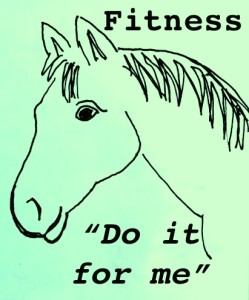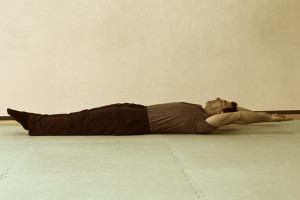 As part of our Focus on Fitness, we talked with trainer David Stickler about core exercises for riders. He will lead a Rider Fitness elective at the Best Horse Practices Summit.
As part of our Focus on Fitness, we talked with trainer David Stickler about core exercises for riders. He will lead a Rider Fitness elective at the Best Horse Practices Summit.
Stickler majored in exercise science at Fort Lewis College in Durango, Colorado, where he played defensive line before playing professional football overseas as a middle linebacker.
The Coloradan now teaches strength classes in Mancos and acrobatic yoga classes in nearby Cortez. In his spare time, the 33-year old performs as a circus aerial acrobat.
 Stickler agreed with Christina Savitsky in considering core strength a matter of continued awareness and not just daily exercises. “What follows are not just one-time exercises. They are sustained movements,” he said.
Stickler agreed with Christina Savitsky in considering core strength a matter of continued awareness and not just daily exercises. “What follows are not just one-time exercises. They are sustained movements,” he said.
These exercises steer clear of the crunches and sit-ups that Beth Austin warned riders to avoid at all costs. They are recommended for all riders. Those of us with back issues, proceed gently. Use discretion in the number of repetitions. In other words, challenge yourself, but be sensible!
Four Core Strengthening Moves
- Hollow Body Progression (so called because once you learn the basic concept, you can add more motion and involve your limbs.)
Lie on the ground with your knees up. Tip your pelvis toward the back and your hips toward your ribs. While you’re doing that, pull your belly button back through your lower lumbar.
You’re now tightening up your hips and abdominals: it’s like locking your center. Any movement from your top responds to your hips now. Just learning to hold that Hollow Body posture and
constantly reminding yourself: from hips to ribs to belly button to back. This form ties the lower body to the upper body.
Once you have that Hollow Body form, you can try bringing your arms overhead. Remember to keep that Hollow Body form. Keep the abdominals engaged!
Next, bring one leg off the ground. Then, the other. Alternate tapping your toes, with knees bent.
Next, you can put a ball between your legs to engage your adductors (the inner thigh muscles riders use so much). With the ball held just above your knees, move your legs up and down, left and right while maintaining Hollow Body.
A big part of these exercises is remembering to breath while you’re doing it, because it’s not a one-time exercise, it’s a sustained motion. Find that abdominal engagement first by lying on the ground and once you start feeling like you have that awareness, then you can carry it to walking and riding.
-
Plank and plank waves
The plank is a static exercise where you use your arms to raise yourself off the floor and hold the whole body straight and rigid, like a plank of wood. Plank waves are when you drop your hips below that plank plane and then let your hips rise above that plane. The wave is a good way for people to find where that real plank is, by going a few inches above the plane and a few inches below it. This is another exercise that brings awareness.
If you have a yoga background, you could push from downward dog to plank and back.
Hurting back?
Go back to Hollow Body. That locking of center keeps your back from taking the brunt of the force. I would avoid plank until you can maintain Hollow Body.
avoid plank until you can maintain Hollow Body.
- Bar Work
If you don’t have access to an overhead bar from which to hang, perhaps you have something in the barn to hang from. The trim on a doorway? Be resourceful! Bar work is nice and easy on the back.
While hanging, slowly pull knees toward chest. Don’t swing or otherwise let momentum help out. This should be quite challenging. As you progress and grow stronger, try to increase your range of motion, straighten legs, and move legs laterally (side to side).
- Imaginary ball
Lie on you back with your knees up. Grab an imaginary ball that’s near your left ankle. Your right shoulder will be off the
floor. Picking up the ball, float with both shoulders off the floor and place the ball near your right ankle. This movement is slow, lasting three seconds or more. Repeat in other direction.
You are transferring motion and strength from one side, through your middle, to the other side. From obliques to main abdominals to obliques. That’s strength work that will help a lot in situations where your horse does something unexpected. You’ll have strength with lateral movements.
Go to main Focus on Fitness page.


